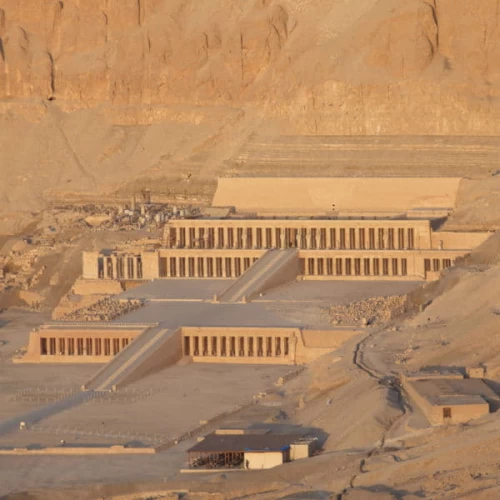
Dios Ptah | el Dios de la Creación y los Artesanos
Ptah era el sumo sacerdote de su templo en Memphis y también el dios de Crafts. Él era uno de la Tríada de Memphis con su esposa Sekhmet (una de las deidades más antiguas y poderosas. Representada como una leona, la hija del dios sol Amun Ra, y es conocida como la diosa del sol y la guerra) y Nefertum ( él representa la salida del sol, y se dice que creó a la humanidad con sus lágrimas).
Ptah también celebró un ritual importante llamado (Apertura de la boca), un ritual funerario para garantizar que la persona fallecida pudiera comer y beber en el más allá.
En el Reino Antiguo, ya estaba identificado con Sokar, el dios de la necrópolis de Menfis: Ptah y Sokar unificaron así la ciudad de los vivos con la ciudad de los muertos. Una identificación adicional, que se mueve de Osiris como el dios de los muertos, conduce a la formación de Ptah-Sokar-Osiris, como una divinidad trascendente en Memphis y, ahora. A partir del Reino Nuevo recupera su individualidad, es el esposo de la diosa Sekhmet y el padre del dios Nefertum.
Ptah was the high priest of his temple at Memphis and also the god of Crafts. He was one of the Triad of Memphis with his wife Sekhmet (one of the oldest and most powerful deities. represented as a lioness, the daughter of the sun god Amun Ra, and is known as the goddess of sun and war)and Nefertum (he represents the sunrise, and it is said that he created mankind from his tears).
Ptah also held an important ritual called (Opening of the Mouth), a funerary ritual to ensure that the deceased person would be able to eat and drink in the afterlife.
In the Old Kingdom, he was already identified with Sokar, the god of the necropolis of Memphis: Ptah and Sokar thus unified the city of the living with the city of the dead. A further identification, which moves from Osiris as the god of the dead, leads to the formation of Ptah-Sokar-Osiris, as a transcendent divinity in Memphis and, by now. Starting from the New Kingdom he regains his individuality, he is the husband of the goddess Sekhmet and the father of the god Nefertum.
Path
- Lord of Ankh Tawy 'The Life of the Two Lands' refers to the unification of Upper and Lower Egypt.
- Nefer Her "Ptah with a beautiful face" refers to the belief that his flesh was made of gold.
- Ptah-Sokar-Osiris : At the end of the period (737–332 BC), the combined traits of the gods gained popularity, and this composite deity assisted the deceased in his trip to the afterlife. A carved wooden statue of the composite god was among the funeral items placed inside the tomb containing the deceased.
- Ptah-Sokar-Atoum's affiliation with the deity of the dead, Sokar, and the creator god of Heliopolis, Atoum, shares many characteristics with Osiris.
Ptah is depicted as a man with green skin, sheathed in a very tight-fitting shroud and capped with a simple blue cap; he holds vertically in both hands a composite scepter bringing together: the sceptre Ouas, the cross ânkh and the pillar Djed, the emblems of life, stability and omnipotence. Unlike the other gods, he wears the straight beard of the pharaohs. Around the neck it has a wide collar held in place by a counterweight on the back. Sometimes, it rests on a pedestal (base of the throne) which has the shape of a hieroglyph and whose meaning is also a symbol for Maât ("world order").
Present the architectural wonders dedicated to Ptah:
The great temple of Ptah in Memphis: A complex that radiated power and divinity, becoming the beating heart of the worship of Ptah.
Other curiosities: The minor temples and altars scattered across Egypt reveal the extent of his adoration.
Beautiful decorations and artwork that honoured Ptah's strength and inventiveness were found inside the temples.















